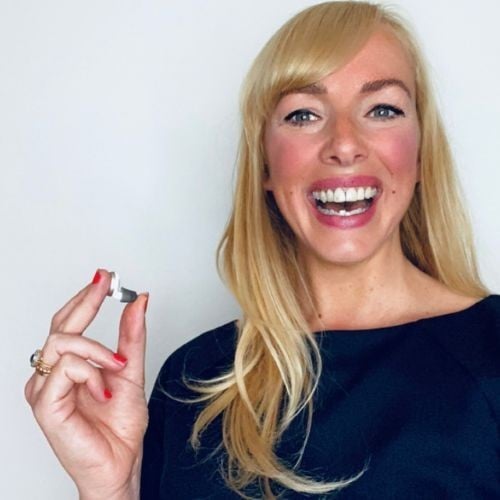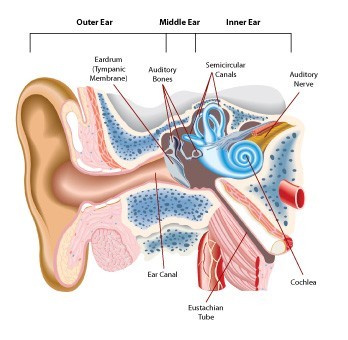
Head of Customer Content Experience

Audiology Expert

World Hearing Day 2024
Teaching kids about hearing loss and hearing aids
World Hearing Day 2024, Thursday 3rd March 2024
#worldhearingday #WorldHearingDay2024 #SafeListening #HearTheFuture
World Hearing Day is a globally recognised annual event held in March, focusing on raising awareness about hearing loss and promoting ear and hearing care. This observance aims to address the increasing prevalence of hearing impairment and its impact on individuals worldwide. World Hearing Day emphasises the importance of early detection, prevention, and timely intervention for hearing health.
It serves as a platform to advocate for accessible hearing services, educate the public on hearing loss prevention, and empower individuals to take proactive steps towards preserving their hearing. By highlighting the significance of hearing health, World Hearing Day strives to ensure a world where everyone can enjoy the gift of sound.
At Hearing Aid UK, we love any opportunity where we can talk about subjects that are very important to us in our industry and raise awareness about hearing loss, hearing aids, and hearing healthcare. In this article, we discuss how important it is to teach children about hearing loss.
So, why is raising awareness early so important?
Teaching children about hearing loss is important for a number of reasons. One of the main reasons is to promote understanding and empathy towards individuals with hearing loss.
Children who learn about the challenges that people with hearing loss face are more likely to be compassionate and inclusive when interacting with them. This can help to create a more inclusive and understanding community for people with hearing loss.
Another reason to teach children about hearing loss is to help them understand the importance of protecting their own hearing. Children may not fully understand the potential long-term consequences of exposing themselves to loud noise, and teaching them about the risks can help them make more informed decisions about how to protect their hearing.
Additionally, teaching children about hearing loss can help them to identify when they or someone they know might be experiencing hearing loss. This can lead to early intervention and treatment, which can be beneficial in managing and coping with the condition.
Education starts with the kids
Children are constantly listening and watching - studies show that they make better decisions when parents or adults talk to them about life issues. Talking to children about hearing loss at a young age, is not just beneficial to curb stigma and exclusivity - but to also teach them about preventing noise-induced hearing loss and the damage it can do to their own hearing.
This means that when they are old enough to make their own choices, natural habits and awareness dictate. There are so many dedicated people, charities and companies that do a great job of raising awareness on this topic. We’ve seen the launch of the hearing aid emoji and dolls that have hearing aids or cochlear implants – all tapping into the younger generation and highlighting inclusivity.
We see this as a huge step in the right direction - squishing the stigma surrounding hearing loss and hearing aids. However, there is so much more we can do, and it all starts with the kids. It’s a topic that isn’t taught at school, so when children meet children with hearing aids, they might label them as being different.
Even as adults, we know the lack of understanding evokes judgement and can contribute to bullying - either in the workforce or in the school playground. We strongly believe that teaching a child about hearing loss early on can help and truly make a difference in how they respond and understand.
How do we talk to kids about hearing loss?
Fortunately, we live in a time where information and resources are accessible online, making it easier to gain an education on hearing loss or any other subjects. Creating a digital world of tools, support, education, community hubs and forums - for people to connect and grow on their hearing loss journey and for others to better relate.
This means that there is plenty of support out here to tap into to educate your little ones. Here are a few ideas on how to raise awareness about hearing loss and hearing aids within a school environment or at home:
1. Talk about how hearing works
- Find a diagram of the inside of an ear online – perhaps you might want to print it off, so it is easier to see and point to.
- Then point to the different parts of the ear – The outer ear canal, eardrum and the auditory nerve that goes to the brain.
- Using your finger show how sound travels through the ear canal to the auditory nerve and explain that this nerve leads to the brain, where it works out what the ear has heard. Then explain that your brain then tells you what sound you have heard. Was it a bird? Was it a car?
- Point to the auditory nerve and explain that when children have hearing loss, it is because this part of the ear is damaged.

2. Talk about how hearing aids work
- Explain that hearing aids work like a ‘funnel’, which zooms in on the sound and sends it straight to the ear.
- The hearing aid makes sense of the sound so the auditory nerve can understand what it is. Very clever!
3. Talk about how hearing aids help in school
- Explain that it is hard for children with hearing loss to hear their classroom friends without wearing their hearing aids. Children may be too far away for them to hear or read their lips. Voices may be too quiet to hear even if they are close by.
- Wearing hearing aids make voices and sound louder so that they can hear, follow and get involved with the rest of the classroom.
- Explain that sometimes the teacher may wear a microphone around their neck to help make their voice louder for the child with hearing loss to hear better using their hearing aids.

World Hearing Day 2024
Focusing on the positives of hearing loss, hearing aids and inclusivity
Hearing aids are cool, they don’t make children any ‘different’
- It is important to let children know and understand that hearing aids don’t change a child.
- A child with hearing loss still eats sweets, plays games and reads like all the other children.
- Tell them that it is important to ask them to join in all your games in the playground with your other friends.
- Remember that hearing loss does not mean being 'different' or that they should be treated differently – it just means their ears need a little help.
Keep it simple when educating children about hearing loss and hearing aids
By giving children a simple and easy to understand education about hearing loss and hearing aids they will realise that all children should be treated the same. In turn, children will tell other children about hearing loss, which promotes inclusivity and a greater understanding.
It only takes willingness and the right resources to educate children in the right way – in a way they understand. Nurturing a young mind to not discriminate and to treat everyone equally throughout their lives is invaluable. Education paves a path for understanding – so we no longer fear or judge what we cannot comprehend.
In conclusion
Finally, hearing loss and communication disorders is an important public health issue, early identification, and intervention is important and can make a big impact on children and their families. Also, by educating children about hearing loss, and how to support those with hearing loss, we can help build a more inclusive and accessible society for all.
Why Choose Us?
- FREE Hearing Tests
- Best Hearing Aids and Prices
- FREE Aftercare for Life
- FREE Home Visits
- 200+ Local Audiologists
- 60 Day Money Back Guarantee
World Hearing Day 2024
Want more information about hearing healthcare, hearing aids and how they can help you or a loved one? Call us free on 0800 567 7621 for support on this topic or if you have any other questions regarding hearing healthcare.
Read Next:
What's included in our hearing aid prices?
Our specialist service includes:
Do not spend hundreds of pounds without getting a second opinion from us.
Please call us on 0800 567 7621
 Not only are the prices great, but the service is fantastic! Many thanks to your team.
Not only are the prices great, but the service is fantastic! Many thanks to your team.Watch our video about our hearing healthcare services below
Other pages you might find useful
Common FAQs when researching hearing aids and hearing loss
If you are looking at this page then it is likely that an audiologist has suggested that you purchase this particular hearing aid, so is this the best model for you?
In general, any audiologist will always be recommending to you the model that best suits your needs. Here is a useful check list to make sure that is the case.
- Audiologist level of knowledge. The audiologist you have seen will hopefully have a wide knowledge of all available hearing aids, however some will only be familiar with a small number of brands and therefore may not really be in a position to know which model is the best for you. It is OK to challenge their recommendation and ask them to justify why this particular brand is the one for you.
- Do research. Read about the hearing aid that was recommended. Does it seem like it will suit your lifestyle? Does it have more or less features than you need?
- Be aware of sales targets. Many high street retailers have specific tie-ins to a particular manufacturer/brand. The hearing aid they have suggested may still be the correct one for you, but do your research so that you know why they might have recommended it.
If in doubt, feel free to give us a call. That's what we're here for.
If you have a significant hearing loss in both ears, you should be wearing two hearing aids. Here are the audiological reasons why:
Localisation. The brain decodes information from both ears and compares and contrasts them. By analysing the miniscule time delays as well as the difference in loudness of each sound reaching the ears, the person is able to accurately locate a sound source. Simply put, if you have better hearing on one side than the other, you can't accurately tell what direction sounds are coming from.
Less amplification required. A phenomena known as “binaural summation” means that the hearing aids can be set at a lower and more natural volume setting than than if you wore only one hearing aid.
Head shadow effect. High frequencies, the part of your hearing that gives clarity and meaning to speech sounds, cannot bend around your head. Only low frequencies can. Therefore if someone is talking on your unaided side you are likely to hear that they are speaking, but be unable to tell what they have said.
Noise reduction. The brain has it’s own built in noise reduction which is only really effective when it is receiving information from both ears. If only one ear is aided, even with the best hearing aid in the world, it will be difficult for you to hear in background noise as your brain is trying to retain all of the sounds (including background noise) rather than filtering it out.
Sound quality. We are designed to hear in stereo. Only hearing from one side sounds a lot less natural to us.
For most people, the main benefit of a rechargeable hearing aid is simple convenience. We are used to plugging in our phones and other devices overnight for them to charge up.
For anybody with poor dexterity or issues with their fingers, having a rechargeable aid makes a huge difference as normal hearing aid batteries are quite small and some people find them fiddly to change.
One downside is that if you forget to charge your hearing aid, then it is a problem that can't be instantly fixed. For most a 30 minute charge will get you at least two or three hours of hearing, but if you are the type of person who is likely to forget to plug them in regularly then you're probably better off with standard batteries.
Rechargeable aids are also a little bit bigger and are only available in behind the ear models.
Finally, just like with a mobile phone, the amount of charge you get on day one is not going to be the same as you get a few years down the line. Be sure to ask what the policy is with the manufacturer warranty when it comes to replacing the battery.
For most people, the answer is yes. But it's never that simple.
The majority of hearing problems affect the high frequencies a lot more than the low ones. Therefore open fitting hearing aids sound a lot more natural and ones that block your ears up can make your own voice sound like you are talking with your head in a bucket. Therefore in-ear aids tend to be less natural.
However the true answer is we can't tell until we have had a look in your ears to assess the size of your ear canal, and until we have tested your hearing to see which frequencies are being affected.
People with wider ear canals tend to have more flexibility, also there are open fitting modular CIC hearing aids now that do not block your ears.
There is also the age old rule to consider, that a hearing aid will not help you if it's sat in the drawer gathering dust. If the only hearing aid you would be happy wearing is one that people can't see, then that's what you should get.
Most people can adapt to any type of hearing aid, as long as they know what to expect. Have an honest conversation with your audiologist as to what your needs are.
Generally speaking, six or more. Unless it's none at all.
The number of channels a hearing aid has is often a simplistic way an audiologist will use to explain why one hearing aid is better than another, but channels are complex and it is really not that straightforward.
Hearing aids amplify sounds of different frequencies by different amounts. Most people have lost more high frequencies than low and therefore need more amplification in the high frequencies. The range of sounds you hear are split into frequency bands or channels and the hearing aids are set to provide the right amount of hearing at each frequency level.
Less than six channels and this cannot be done with much accuracy, so six is the magic number. However, a six channel aid is typically very basic with few other features and is suitable only for hearing a single speaker in a quiet room. The number of channels is not what you should be looking at, it's more the rest of the technology that comes with them.
As a final note, different manufacturers have different approaches. One method is not necessarily better than any other. For example some manufacturers have as many as 64 channels in their top aids. Most tend to have between 17 and 20. One manufacturer has no channels at all.
Hearing aids are easily lost, misplaced or damaged and typically are one of the most expensive personal possessions an individual can own. We offer hearing aid warranty cover for £80 per year per aid. Find out more here
All our audiologists use the very latest technology and provide the full range of tests to accurately measure your hearing for free. Find out about what we offer all our customers here
Hearing Aid UK offers all their customers free home visiting services and home visits for hearing aids - Including hearing tests, fittings, maintenance, check-ups and much more in the comfort of your own home and at your convenience. Find out more information here
Here, at Hearing Aid UK, we are dedicated to offering low hearing aid prices. We achieve this by having no head office and low marketing costs. Our hearing aid prices are amongst the lowest you will find anywhere in the world.
Ask the Experts
6 Morton Lane
Walkwood
Redditch
Worcestershire
B97 5QA
Latest Launch
When we refer to a product as 'Latest Launch', we mean it is the latest to be released on the market.
New
When we refer to a product as 'New', we mean that the product is the newest hearing aid model on the market.
When we refer to a product as 'Superseded', we mean that there is a newer range available which replaces and improves on this product.
Older Model
When we refer to a product as an 'Older Model', we mean that it is has been superseded by at least two more recent hearing aid ranges.